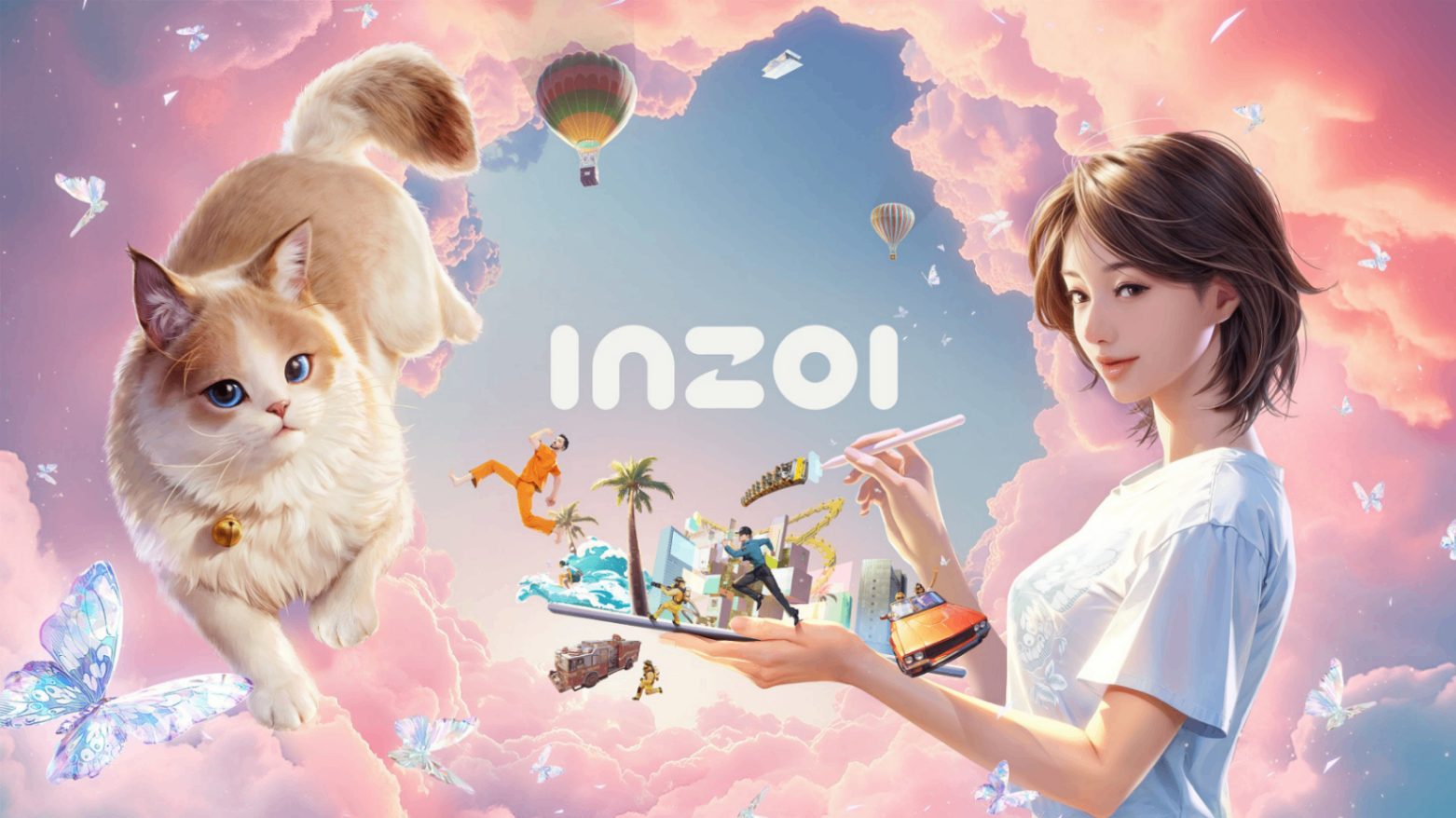Key Highlights
- InZOI is a new life simulation game built on Unreal Engine, boasting photorealistic graphics that are visually stunning.
- The game features a best-in-class character creator with deep customization, allowing for incredibly detailed and unique avatars.
- Despite its visual prowess, the current early access version suffers from shallow and monotonous gameplay that feels unrewarding.
- Social interactions and career progression are limited, leading to a sterile experience that lacks the charm of its competitors.
- The simulation often feels soulless, focusing more on aesthetics than on creating engaging life experiences for your characters.
- While brimming with potential, the game in its current state is more of a tech demo than a fully realized life sim.
Introduction
The life simulation genre has a new, highly anticipated challenger. InZOI, from developer Krafton, has entered the scene in early access, turning heads with its hyper-realistic graphics powered by Unreal Engine. It presents itself as a next-generation life simulation game, aiming to compete with long-standing giants. The initial trailers promised a world of unparalleled visual fidelity and creative freedom. But does the gameplay live up to the graphical hype, or is this beautiful world just an empty shell? This review examines if InZOI is the future or just a pretty face.
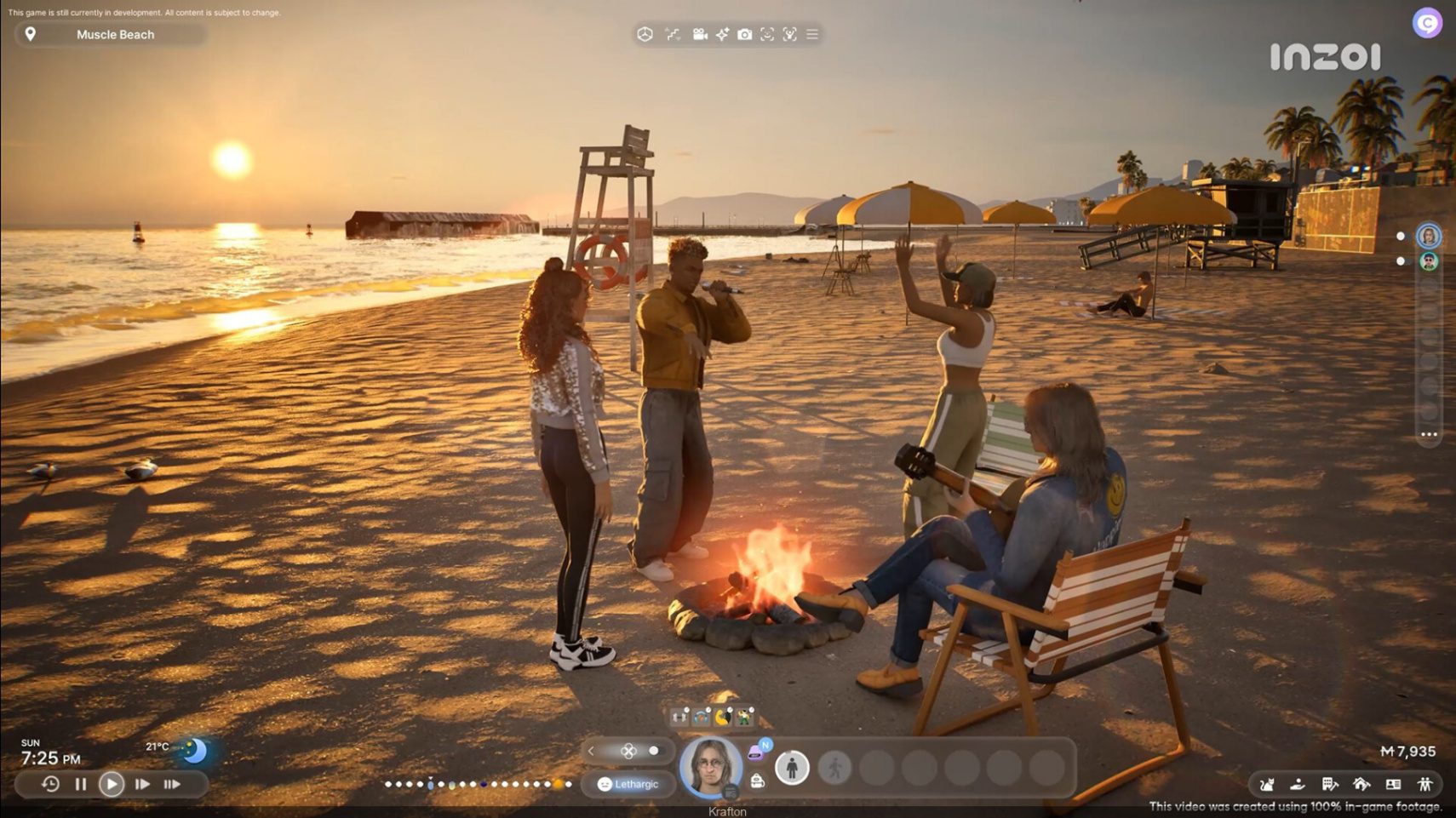
The Visual Brilliance of InZOI
There is no denying that InZOI is a technical marvel. The first thing that will strike you is the sheer quality of its graphics. Built using Unreal Engine, the game pushes the boundaries of photorealism in the life-sim genre, creating a world that is breathtaking to simply look at. From the detailed stitching on clothing to the light reflecting in your character’s eyes, the visual presentation is its strongest asset.
This commitment to realism is evident everywhere. The environments are vibrant and detailed, and the characters, or “Zois,” benefit from what appears to be advanced modeling and potentially motion capture capabilities. However, this visual brilliance sets a high bar that the rest of the game struggles to meet, as we will explore in its art direction and sound design.
Graphics Quality and Art Direction
Diving deeper into the graphics, the art direction is consistently impressive, if somewhat sterile. The game’s aesthetic leans into a hyper-luxurious, almost corporate-clean look. Every apartment is immaculately furnished, and every Zoi looks like a supermodel. While the advanced customization tools are robust, allowing you to tweak facial features and even create asymmetrical details, there are noticeable limitations. The game struggles with plus-size bodies, and options for tattoos and piercings are almost nonexistent.
This focus on a specific, narrow beauty standard is a recurring theme. The character creator, powered by the Unreal Engine, can produce stunning results, but it’s difficult to create a character who doesn’t look conventionally gorgeous. This curated perfection extends to the world itself, resulting in an art direction that feels visually remarkable but lacks personality and grit.
Be warned, however, that these high-fidelity graphics come at a cost. On a less-than-powerful gaming rig, the experience can be rough. You might encounter textures popping in, characters clipping through objects, and a general graininess that undermines the intended photorealism. To truly appreciate the graphics, you’ll need a PC that can handle the demand.
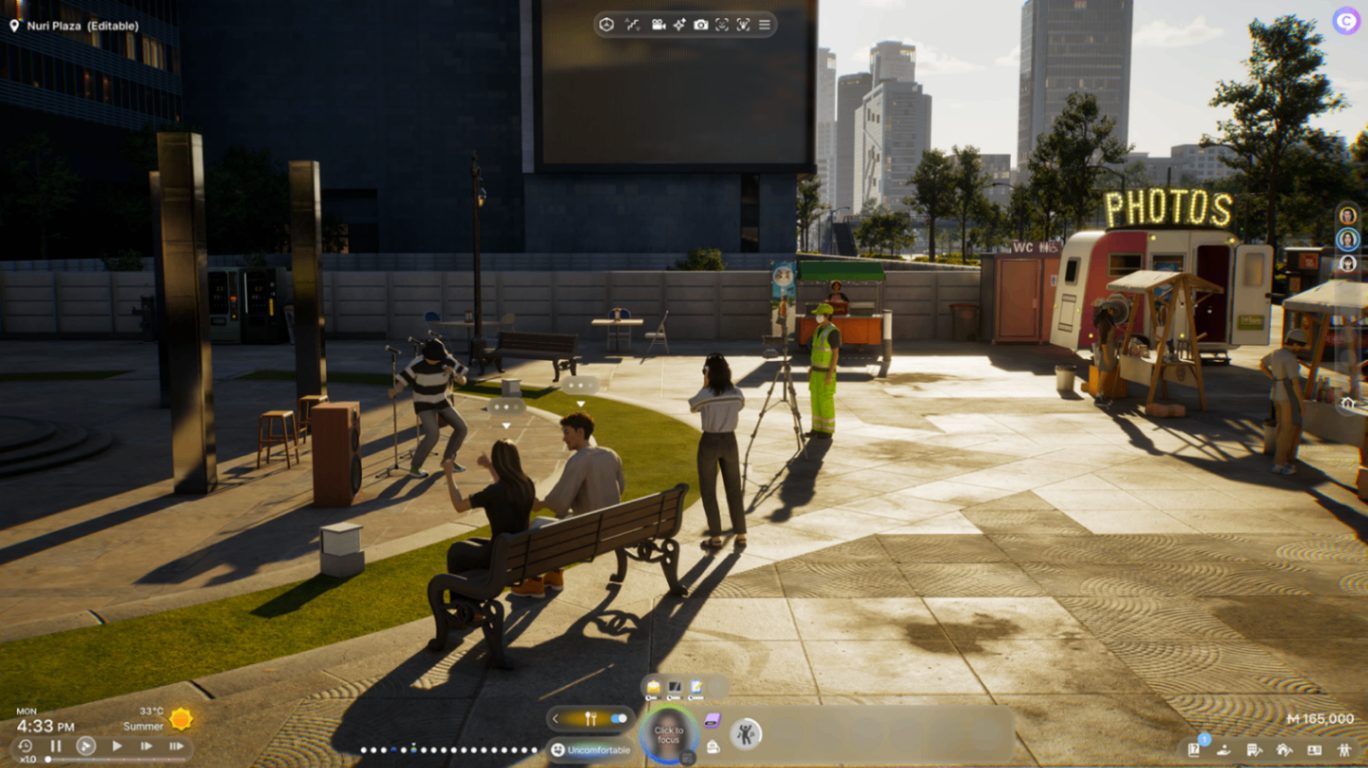
Immersive Sound Design and Atmosphere
While the visuals are designed to pull you in, the overall atmosphere struggles to maintain that immersive experience. The sound design is competent—you’ll hear the distinct crack of an egg while cooking or the hum of the city—but it contributes to a world that feels strangely quiet and lifeless. There is a distinct lack of wit, charm, or humor that gives other life sims their soul. The game takes itself very seriously, and the result is an atmosphere that feels sterile and hollow.
This feeling is amplified by the game’s dialogue and interactions. Zois discuss cryptocurrency and K-Pop stocks with the same level of passion as they would a deep personal feeling, creating a bizarre, dystopian vibe. The AI that drives these characters seems to prioritize function over personality, making them feel like unfeeling automatons wandering through a beautiful but empty world. One of the bizarre dialogue options, “say life is but one layer of a dream,” perfectly captures the game’s uncanny and emotionally detached atmosphere.
Ultimately, the game world feels less like a vibrant community and more like a high-tech corporate campus with control of cities being simplified. The meticulously crafted environments are beautiful to observe, but they lack the chaotic, unpredictable energy that makes a simulated world feel truly alive. The focus on realism in visuals doesn’t translate to a realistic or engaging social atmosphere.
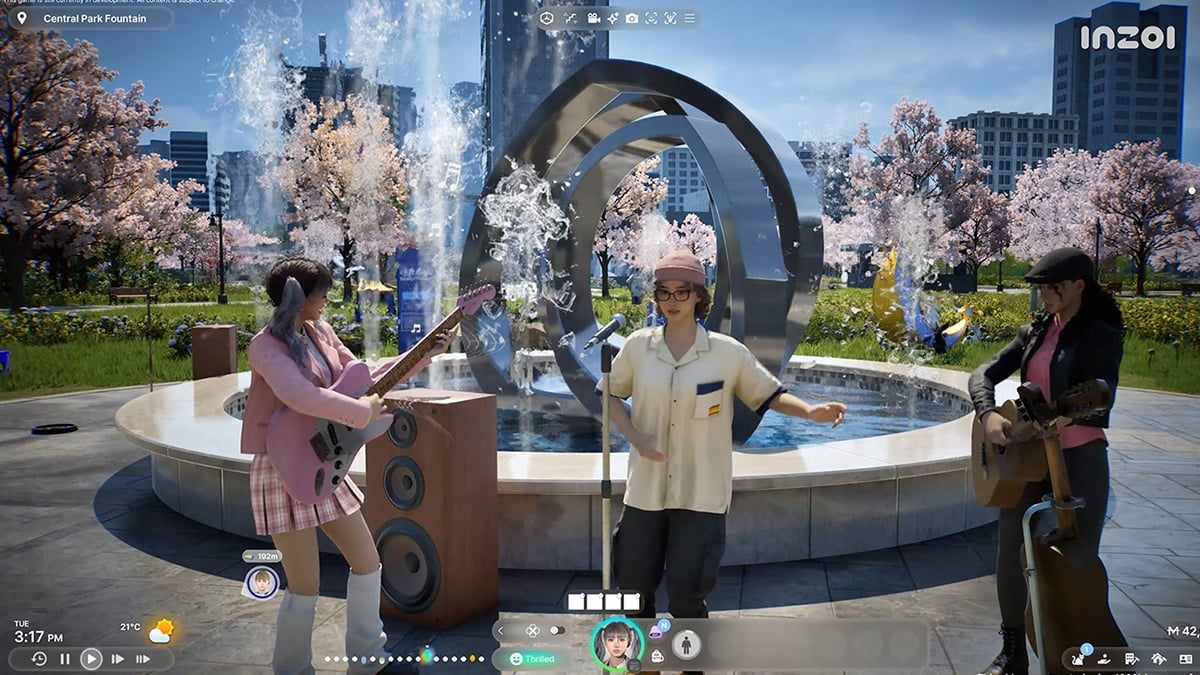
Exploring the Gameplay Mechanics
For all its stunning visuals and advanced customization tools, InZOI’s core gameplay is where the cracks begin to show. The “playing with life” element, the very heart of any life simulation, currently feels underdeveloped and unrewarding. While you can spend hours designing the perfect character and home, the actual experience of living out their life is surprisingly dull.
The gameplay loop quickly becomes monotonous, with shallow career paths and social interactions that lack depth. This raises a critical question for the genre: How does InZOI compare to The Sims series? While it may win on looks, the underlying simulation features and player choices tell a very different story.
Simulation Features Compared to Industry Standards
When placed side-by-side with an industry giant like The Sims, InZOI’s strengths and weaknesses become crystal clear. It excels in areas of visual customization but falls short in delivering a fully functional community simulation experience. The game seems to have replicated the more sterile aspects of modern life sims without capturing the quirky, emergent storytelling that made the genre popular in the first place.
The core difference lies in personality. The Sims, even in its later iterations, retains a sense of tongue-in-cheek satire and the potential for chaos. InZOI, by contrast, feels serious and rigid. Relationships are a grind, careers are unsatisfying “rabbit holes,” and the Zois themselves lack autonomy and flair, making the simulation feel more like a chore than a sandbox of possibilities.
Here is a direct comparison of key features:
|
Feature |
InZOI |
The Sims Series |
|---|---|---|
|
Character Creation |
Photorealistic with deep facial customization but limited body types and styles. Includes advanced texture and pattern creation for clothing. |
Cartoonish style with more exaggerated features and broader body diversity. Relies on mods for advanced texture customization. |
|
Build/Buy Mode |
Intuitive and powerful, with integrated features like free-placing items and mesh creation that often require mods in other games. |
Robust and well-established system, but can feel clumsy without community-made mods and tools for advanced building. |
|
Social Interaction |
Overwhelming menus with oddly specific, surface-level dialogue. Relationships build slowly and feel transactional and devoid of warmth. |
A system of traits and moods drives more organic and often unpredictable social outcomes, leading to emergent narratives. |
|
Career Progression |
Mostly “rabbit hole” experiences where Zois disappear, or simple, repetitive tasks that quickly become monotonous and unrewarding. |
A mix of active careers, semi-active jobs, and rabbit holes that offer more variety and a clearer sense of progression. |
Depth and Complexity of Player Choices
The promise of a life simulator is the ability to shape your own stories and create your own unique Zoi with a rich inner life. Unfortunately, the depth of player choices in InZOI is currently very limited. Zois often feel like they lack their own free will, passively following orders with minimal personality. Even when they have fleeting desires, these rarely lead to interesting or unexpected gameplay moments. The dream of crafting your own narratives feels distant when the characters themselves are so inert.
This lack of complexity extends to major life paths. Starting a family is surprisingly difficult, as even married Zois begin with a neutral relationship, treating each other like strangers. Pursuing a career or education is a mind-numbingly dull process of watching time slowly pass. There’s no sense of accomplishment or growth, making your choices feel inconsequential. You’re not guiding a dynamic person; you’re just ticking boxes on a checklist.
So, are future updates planned to address gameplay depth? The developers at Krafton have stated they are listening to player feedback and have promised that more content is on the way, free of charge. There is hope that they will focus on the social simulation aspects and add the much-needed depth to player choices. For now, however, the creative freedom celebrated in the customization tools does not extend to the gameplay itself.
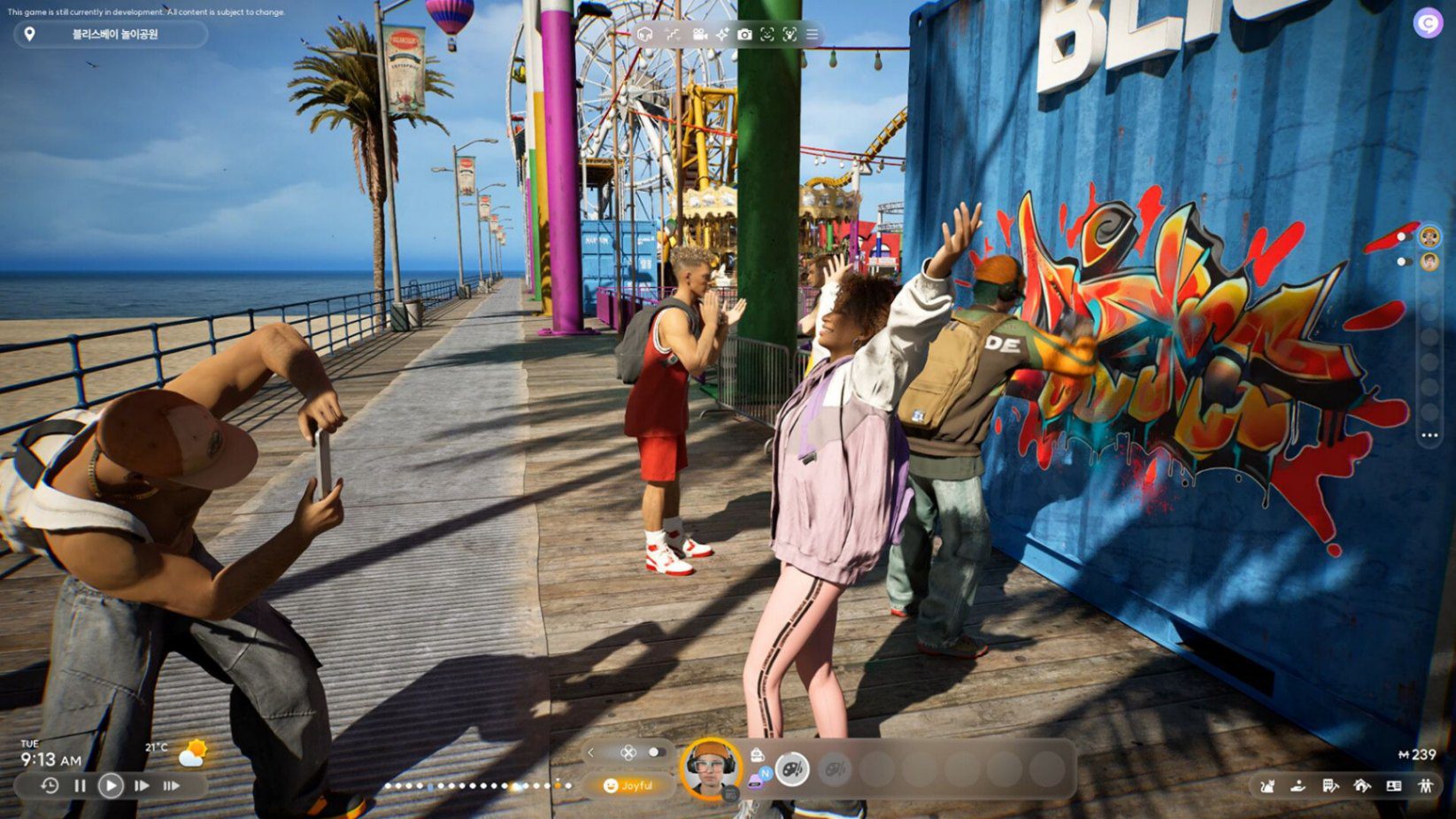
Conclusion
In conclusion, while “InZOI” dazzles players with its stunning visuals and immersive sound design, it ultimately falls short in delivering the depth and complexity that hardcore gamers crave. The graphics and art direction set a high bar for visual storytelling, yet the gameplay mechanics feel underdeveloped when compared to industry standards. For those who prioritize eye-catching aesthetics over intricate simulation features, “InZOI” may still offer value. However, if you seek a rich gaming experience filled with meaningful choices and varied interactions, you might want to look elsewhere. Keep an eye on future updates to see if the developers address these shortcomings. Your gaming journey deserves the best—choose wisely!
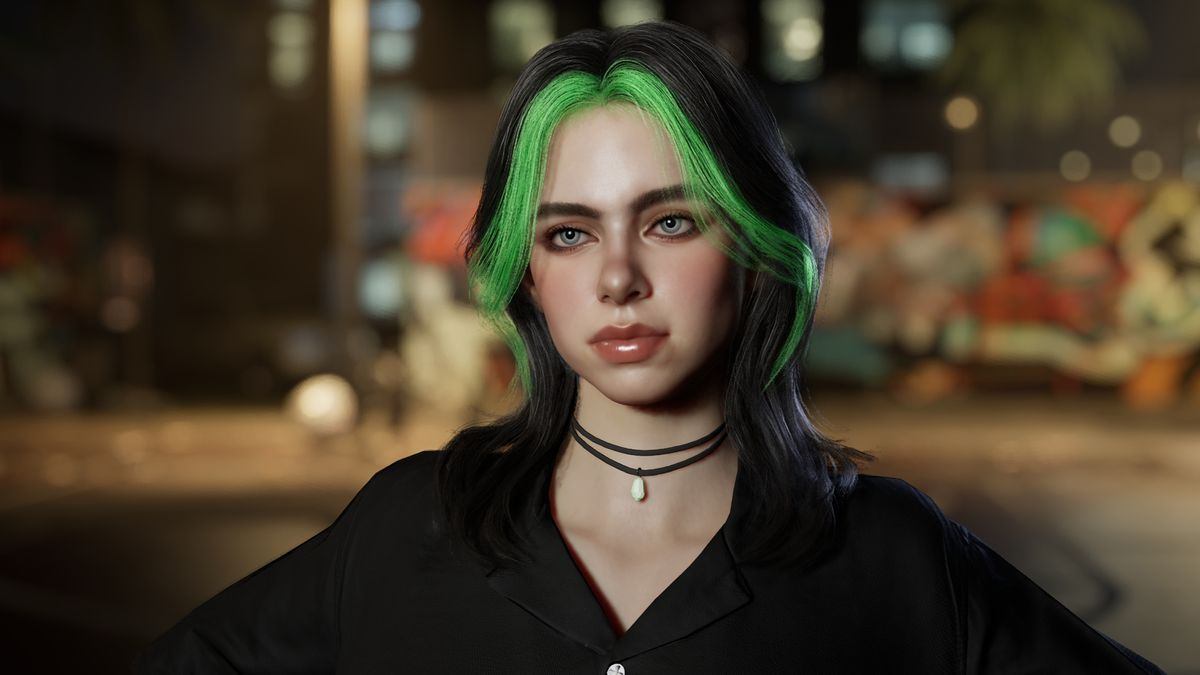
Frequently Asked Questions
Is InZOI worth buying for fans of life simulation games?
If your primary joy comes from character creation and interior design, the unmatched customization might be worth the price of entry. However, players seeking deep simulation and engaging gameplay should be cautious, as the current version is severely lacking in that department.
How does InZOI compare to The Sims series?
InZOI surpasses The Sims in pure graphical fidelity and its built-in customization options for clothing and items. However, it fails to capture the charm, humor, and emergent narrative gameplay that defines the Sims’ long-running appeal in the simulation space.
Are future updates planned to address gameplay depth?
Yes, the developers have confirmed that future updates are planned, which will be free and are expected to address the current lack of content and gameplay depth. This offers the profound gift of hope for a more robust simulation with unexpected developments ahead.
